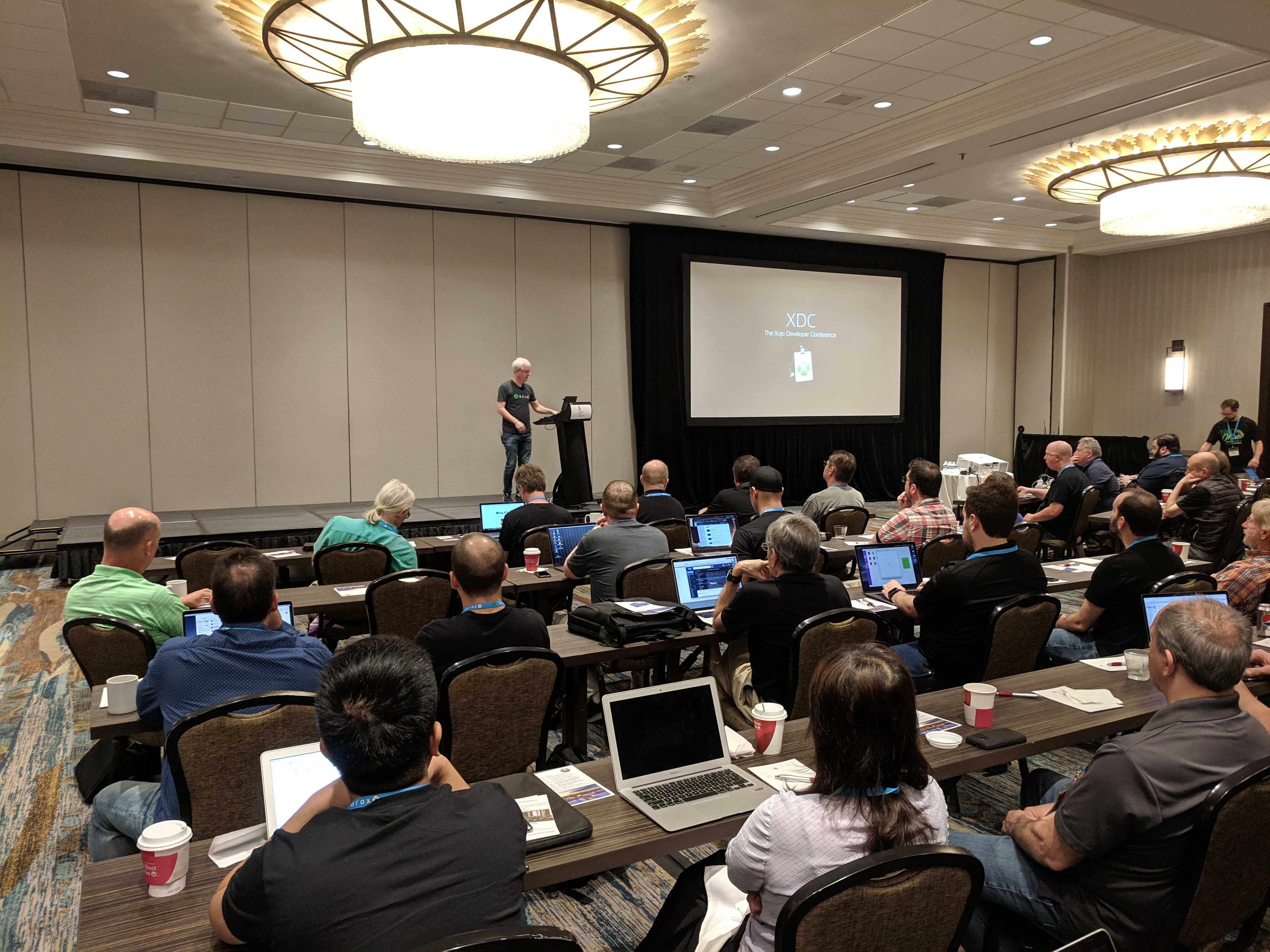Getting the metadata from an image file on macOS is quite easy using Declares. Continue reading and I’ll show you how!
Tag: Declares
When looping through an array, I am a big fan of using For Each as I find it more readable than using a For loop with a counter and looking up the item in the array with the counter. Sometimes it’s fun to do stuff just because you can! Plus, it makes for a good excuse to learn about some more advanced Xojo features
Comments closedGeoff just wrapped up the keynote here in sunny, windy Miami, Florida.

After a brief introduction welcoming attendees from 11 different countries, Geoff began the keynote by sharing some graphs showing how the Xojo community has been changing.
Comments closedDid you know that it’s possible to load and use 3rd Party Frameworks in your Xojo iOS projects? There’s quite a number of good projects out there, many of which are on sites like GitHub and freely available for use in your projects. If you’re familiar with Declares in iOS, loading a 3rd Party framework requires just a couple of extra lines of code and a CopyFilesStep.
Last year at XDC 2018, Jérémie Leroy talked about making sure your screenshots mimicked the Apple method so that the date was always Jun 9th, the time was always 9:41 AM, the battery always shows as full and the WiFi strength always shows full. It got me thinking that it might be handy to be able to make the simulator always show those values when you do a debug run so that you don’t need to think about it when you are ready to start taking screenshots and movies of your app. One way to do that is to build & run project like SimulatorStatusMagic on the simulator before running your project, but it would be more useful if it was automatic.
Comments closedThere are low-code platforms that don’t provide ability to call directly into the operating system. Fortunately, Xojo does. Our vision for Xojo has always been to make the tool easy to learn and highly productive to develop applications, without sacrificing power when you need it.
Comments closedYou can call into Win32 APIs (aka WinAPI) to use methods and properties that are not built into the framework by using the Declare command. To create a Declare statement you first need to track down the API you want to use using Microsoft’s documentation: Microsoft Developer Documentation.
Comments closedYou can call into Cocoa APIs to use methods and properties that are not built into the Xojo framework by using the Declare command. To create a Declare statement you first need to track down the API you want to use using Apple’s documentation: Apple Developer Documentation.
Comments closedYou can call into Linux APIs to use methods and properties that are not built into the framework by using the Declare command. To create a Declare statement you first need to track down the API you want to use using Linux documentation.
Comments closedYou can call into Cocoa Touch APIs to use methods and properties that are not built into the framework by using the Declare command. To create a Declare statement you first need to track down the API you want to use in Apple’s documentation: Apple Developer Documentation. Most of the time you will reference the Foundation and UIKit libraries, but there are many other libraries as well. Xojo Declares use the Objective-C names so be sure to refer to those in the documentation rather than the Swift naming.
Comments closedMany years ago, the Window Functionality Suite (WFS) library was created by Aaron Ballman. This library was a collection of Win32 Declares (and a few other things) for accessing Windows-specific functionality that was not directly provided by the Xojo framework.
WFS is still available on GitHub, but it has languished over the years. For example, it has lots of legacy code in it for older versions of Windows that is no longer needed since Xojo only supports Windows 7 and later. WFS is also not really compatible with 64-bit projects since the Declares mostly assume 32-bit or bust.
To that end, I’ve started a new open-source project called WinAPILib that is now available on GitHub.
Comments closed